What are the items that make up a ballscrew actuator's accuracy? (1)
The five items expressing a ballscrew actuator's performance
For ballscrew actuators, the following five items are defined to express their performance:
(1) Repeated positioning accuracy
(2) Positioning accuracy
(3) Traveling parallelism
(4) Backlash
(5) Starting torque
This article explains the items (1), (2), and (3) above related to positioning.
A ballscrew actuator is a linear motion unit with a ball screw as its drive element. For this reason, it is important to indicate numerically the positioning performance, to which the ball screw contributes the most.
Two items are defined as items that indicate the positioning performance: (1) repeated positioning accuracy, which measures the accuracy of the stop position when positioning is performed repeatedly in the same way from an arbitrary point, and (2) positioning accuracy, which measures the absolute difference between the targeted stop position and actual stop position when positioning is performed from a reference point.
See below for a detailed explanation on how each item is measured.
(1) Method for measuring repeated positioning accuracy
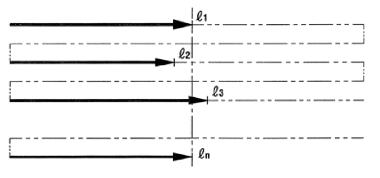
Positioning is performed 7 times in the same way and in the same direction from an arbitrary point to measure the stop position and divide by 2 the maximum difference among the read values.
With this measurement as the basis, perform measurement from approximately the centre and from both ends of the travel distance. Use the maximum value among those measured as the measured value.
(2) Method for measuring positioning accuracy
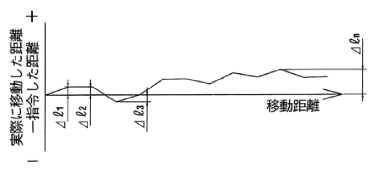
Perform positioning in a fixed direction and use the obtained position as datum point.
Then, perform positioning in the same direction and measure the difference between the actual distance travelled from the datum and the ordered distance.
Repeat this measurement throughout the stroke range, and use the maximum difference between the actual distance travelled from the datum and the ordered distance as the measured value.
(3) Traveling parallelism
In short, traveling parallelism indicates numerically the range of variation in the height of the mounting surface above the slide block along the guide rail.
This accuracy has two variants depending on where the measurement datum is set. One is "traveling parallelism A", where datum is set at the base or surface plate, and the measurement is performed by using a probe placed on top of the slide block, and
The other is "traveling parallelism B", where the datum is set on the slide block, and the measurement is performed by using a probe placed on the base where the guide rail is mounted or on top of the surface plate.
"Traveling parallelism A" is suitable for large measuring surfaces (tables), such as X-Y stages. In the case of ballscrew actuators, the "traveling parallelism B" is used because it can evaluate the entire stroke since the measuring surface (slide block length) is generally small with respect to the stroke.
● Traveling parallelism B
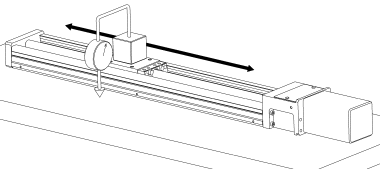
Fix a test indicator in the centre of the slide block, and place the probe of the test indicator on the surface plate where the guide rail is mounted. Use as measured value the maximum difference among the test indicator readings when the slide block is moved throughout the travel distance.
Reference 1: Traveling parallelism A for "ballscrew actuator"
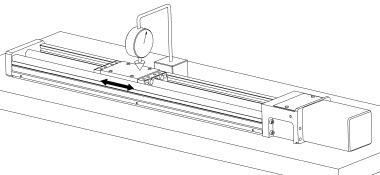
Place a test indicator on the surface plate and the probe on top of the slide block. The measured value is the maximum value read within the measurable travel range in the slide block length direction.
Since the measurable range is small for ballscrew actuators, use traveling parallelism B aside from exceptions.
Reference 2: Traveling parallelism A for "X-Y stage"
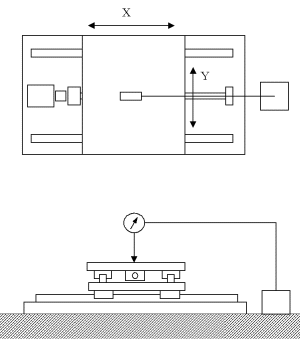
Place a test indicator on the surface plate and the probe in the centre of the table. The measured value is the maximum value read throughout the travel range in the X and Y directions.
